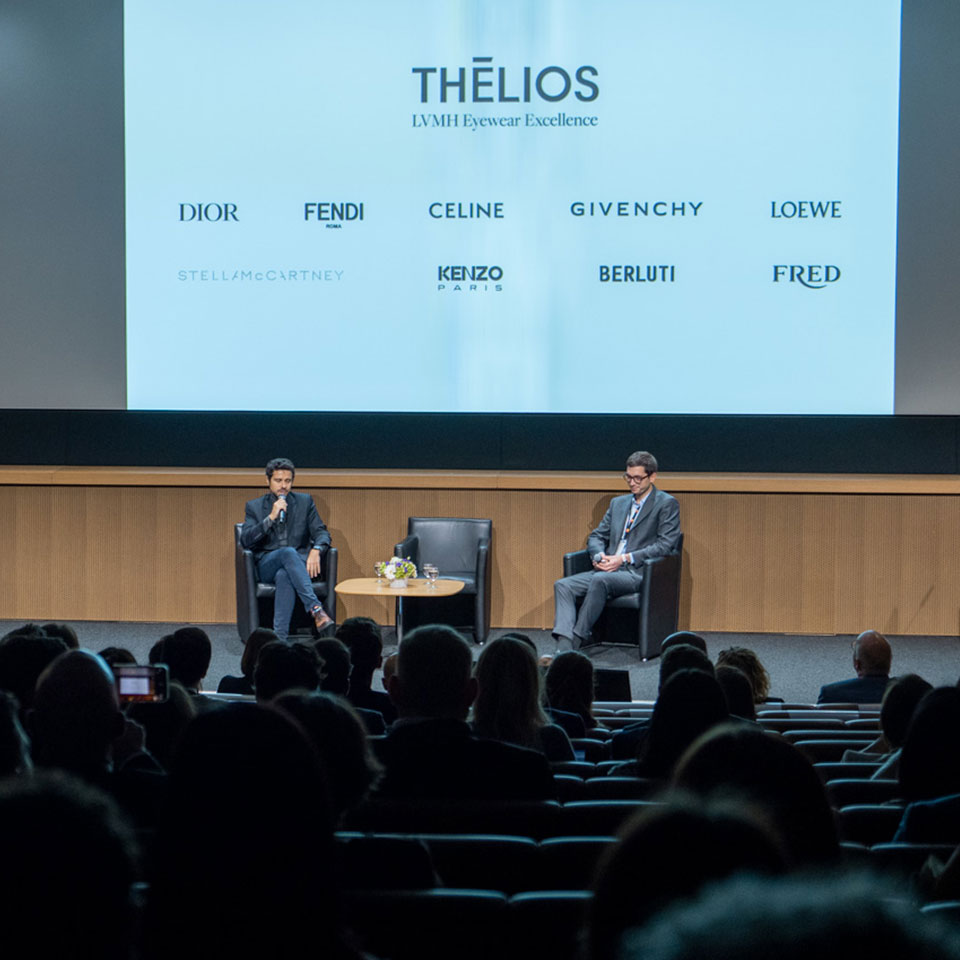
- Partnership
The e-commerce trend is soaring, but physical presence still remains fundamental. Also in the Italian design and furniture sector, the secret is to focus on synergy between all the touchpoints and gaming.
The roundtable on Wednesday 12 May entitled Design & Furniture Made in Italy: the challenges of the new normal for brands and for distribution, held during the Netcomm Forum 2021, saw the participation of Federico Betti, Business Developer of Alpenite, together with Guido Gorlato, Digital Marketing Manager & E-Commerce Manager of Calligaris, Marco Cassina – Marketing Manager of MDF Italia, and Mattia Bedin, Business Development Manager at AD Dal Pozzo.
The discussion regarded Italian design and furniture, and the fact that this is one of the sectors that has witnessed the most significant rise in e-commerce, as a result of the pandemic, which has not only radically changed how people interact with one another, but also how we live and work.
The New Normal imposed on us by Covid-19 has also brought about changes in our purchasing habits and expectations. This regards not only more complex, difficult purchases, such as ordering a kitchen online, but also products that are simpler to configure and order online.
If you were unable to take part, you can watch the recording of the roundtable here.
2020 was a difficult year in many ways, but it also opened up important new opportunities, because it forced many brands into speeding up a digital evolution that would not otherwise have happened in such a short time.
According to Guido Gorlato, Digital Marketing Manager & E-Commerce Manager of Calligaris, this is a question that can be analysed from the perspective of three different groups: employees, end customers and partner customers.
The first of the challenges regarded end customers, who were not able to access the stores, so the physical presence no longer offered sufficient support, with only the digital experience available.
A response to this was offered by web rooms, but these are not entirely satisfactory in providing a sensory dimension. A complex product needs to be tried out and to be touched, and the tool that comes closest to the in-store experience is the digital configurator, which allows the user to customise their product and get as close to it as possible.
<<Partner customers were the hardest hit, especially in the hotel and catering sector. Callegaris, which works with both the residential and contract sectors, was able to compensate for the losses in the latter with gains in the residential sector, because consumers started taking a new approach to the home. Upholstered products, for example, sold particularly well. And we supported our partners with drive-to-store, through continuous communication via social media. There’s a new approach to the home experience, and the home is blending with the office>>, concludes Gorlato, in his account of the last year for Calligaris.

According to Marco Cassina, Marketing Manager / Frederick Billiau – CEO of MDF Italia, “distribution has an increasingly fundamental role to play, at every level, and for all companies. Demand for in-store traffic must be created if we want to maintain product visibility”.
This is why it is increasingly important to transmit all the added value of the product to the end consumer, both through social media channels and on the website. So communication is gaining growing importance, and it’s essential to interact with our business partners by communicating with them in synergy.
<<We are focusing on gradual innovation regarding how brands communicate as an asset for distribution, because while some years ago they were closely connected to distribution, and marketing was aimed at dealers, today – and this is also due to the digital channels – it is geared towards bringing traffic into its partner stores and stimulating demand among end consumers, by creating synergies with the brand’s ecosystem of retailers. I definitely see distribution as playing a valuable role>>, adds Cassina.
Mattia Bedin, Business Development Manager for AD Dal Pozzo, believes there is plenty of scope for innovation. “From a practical point of view, we’ve made the most of the decline in physical presence to boost our digital presence. We’ve taken a fresh look at our CRM-related technology, and we’ve worked with a number of brands with a view to optimising the project. A customer visiting our stores no longer does so to buy a table or a chair, but above all to acquire an idea, and this is what we’re working in with all our communication channels”.
The strategic communication asset AD Del Pozzo is working on focuses on projects rather than individual items. This means seeking to take an across-the-board approach to develop the project as a whole, and it also means engaging the brands in each new opportunity, bringing them on board a collective effort. “And when we talk about projects, we have our partners themselves calling us, because they can see that we’re able to represent them effectively and to illustrate all the complementary aspects that go into shaping a project”, adds Bedin when asked about the mission AD Del Pozzo intends to focus on in the coming years.
<<Marketing continues to play a key role in sales: the winning formula is to know how to awaken interest and create needs among both existing and potential customers. Only an effective account of a project’s values is able to highlight the range of offers to be managed, and this is why companies are beginning to organise these competencies in-house rather than relying on external sources; there is an increasing preference for using the specific, effective skills of the company’s own resource>>.
The findings of the survey presented at the workshop confirm that customers want to receive advice and guidance from an actual person.
45% of survey respondents said they imagined making their next purchase in a multi-brand furnishing store, while the same number envisage having a product made to measure by a craftsman.
A smaller percentage are considering an online purchase, with just 15% of respondents thinking of shopping on a furniture retailer’s e-commerce website, 13% considering a specialised furnishing marketplace and just 5% a general marketplace.
To keep relations with customers closer and more effective, many retailers have taken to providing remote consulting services. While e-commerce offers the opportunity to purchase products, this need not necessarily be its ultimate purpose: showing a price and offering the option to buy it online boosts traffic in any case, converting demand in the stores by bringing customers in with a clearer, more informed idea of what they are looking for. In this way, the added value can remain with the distribution channel, and undoubtedly continues to regard consulting, project design and service.
The role of e-commerce is definitely growing: it’s increasingly important for brands, both to guarantee design projects and for communication. Having an online sales platform is undoubtedly an important lead, although it’s not yet the main business tool. It’s fair to say that e-commerce has a key role in guiding users towards a purchase, or working in synergy to manage the purchasing experience, and it’s an essential tool for any self-respecting omnichannel strategy.
Although almost all customers, even the most reluctant, have been convinced to embrace the digital channel as a source of information, stores remain a key location for customers with a need to be satisfied or a problem to be solved, and these two processes must be developed in synergy with one another.
With a view to focusing on the project concept, e-commerce is a necessary resource to boost traffic in the channel. Having a properly structured e-commerce channel, followed up by physical presence, yields significant results. And even when e-commerce generates confusion, this can encourage consumers to visit the physical store. Customers must be presented with an e-commerce channel that allows them to identify their own personal style, to understand what they’re looking for, and they must be put in a position where they can trust the advice of the experts. For the online purchase of complex products, e-commerce is the perfect channel to initiate a dialogue that will then move into the physical store and continue in person.
Priority must be given, as soon as possible, to investments that allow brands to present their products effectively, to integrate sustainability issues into their strategies and to strengthen customer care in order to advise and assist consumers, and lastly, to start applying a different approach to project design.
It is therefore imperative to produce native digital content for use on websites, or for advertising on social media and digital channels. Content is key for the future, in order to communicate, inspire and engage with the relevant audience, by creating living style suggestions through products.
Sustainability and the circular economy are increasingly authentic resources and challenges for planners, architects and design entrepreneurs. Today, providing consumers with information on their environmental impact and sustainability index, the creation of green projects, the use of natural and recycled materials and the circularity of projects is a factor that makes companies more competitive.
Sustainability is a fundamental factor that must be made part of company strategy.
Marketing must also be improved, because the new normal has shifted attention towards quality of life. Well-being and lifestyle are issues to be tackled through communication, for an understanding of the new directions the most attentive project design is heading in, focusing on new spaces to live, work and feel good in.
Marketing continues to play a key role for sales: the winning formula is to know how to awaken interest and create needs among both existing and potential customers. The role of e-commerce in this regard is undoubtedly growing as a means to guide users towards a purchase, and is essential for any self-respecting omnichannel strategy.
The aim, however, is not to ride the wave of attention peaking around e-commerce, but rather to improve the synergies between touchpoints, adapting them to a new customer journey, because in some cases, physical presence remains something that cannot be replaced. Companies are beginning to organise the competences required for more effective communication independently, in-house, rather than relying on external communication management; there is an increasing preference for using the specific knowledge of the company’s own resources. The focus requested is increasingly shifting towards consulting and support, and away from operations. The investments to be prioritised now regard presenting products more effectively, integrating sustainability into company strategy, strengthening customer care and lastly, starting to take a different approach to project design.


